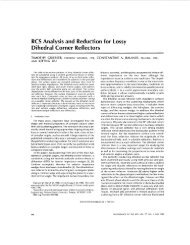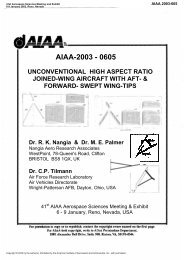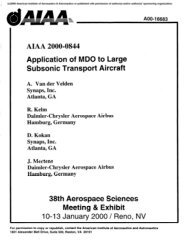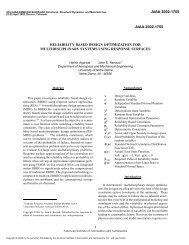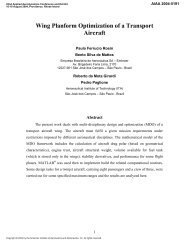The design report
The design report
The design report
You also want an ePaper? Increase the reach of your titles
YUMPU automatically turns print PDFs into web optimized ePapers that Google loves.
Although these values met requirements for this phase of <strong>design</strong>, soon calculations had<br />
to be in more detail and thus AVL had to be used to calculate and perform in depth<br />
analyses on aerodynamic performance and stability.<br />
AVL (Athena Vortex Lattice) version 3.26 was mainly used to calculate and analyse<br />
aerodynamic performance characteristics of the aircraft. Values obtained from AVL<br />
were also used to ensure stability in all dimensions. <strong>The</strong>re were a few assumptions<br />
involved at this stage of <strong>design</strong> as AVL was only a freeware and had limited functionality.<br />
Shapes and geometry entered as part of the <strong>design</strong> had to be of minimal complexity and<br />
consideration to extrusions such as landing gear or location of motors were not taken<br />
into account either. <strong>The</strong> software itself had an easy to follow interface in command<br />
prompt but did not have a particular graphical user interface. <strong>The</strong> input files were made<br />
as accurate as possible by adding detailed coordinate points of the fuselage in order to<br />
replicate its shape and size accurately. Airfoil files were then exported from Profili into<br />
text files. <strong>The</strong>se files had to be manipulated in order to be used for AVL analyses. <strong>The</strong><br />
output files were used to extract key numerical values important to our <strong>design</strong> and<br />
stability analysis. AVL considered the airfoil shapes of the horizontal tail and the wing<br />
and since no airfoil file was linked up for the vertical tail, it was taken to be a plate by<br />
default as the program was <strong>design</strong>ed to do so.<br />
Once the files required for AVL analyses were in place, they had to be run on the<br />
program to ensure the aircraft displayed accurately to a reasonable extent. <strong>The</strong> final<br />
<strong>design</strong> of our aircraft was similar to that which is shown below in figure 3.2.301.<br />
Figure 3.2.301 – <strong>The</strong> aircraft as displayed on AVL.


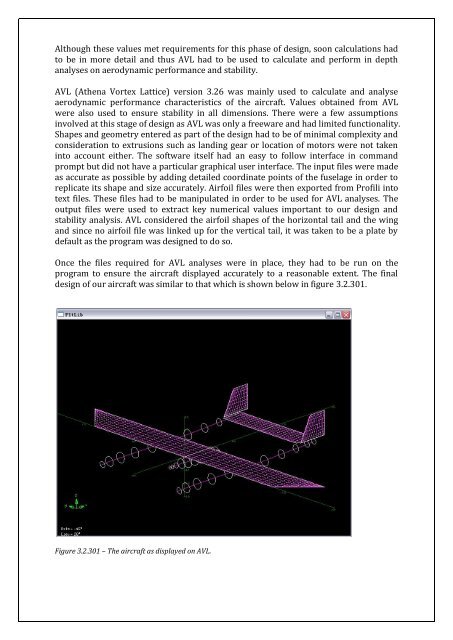





![Introduction to RF Stealth [Book Review] - Antennas and ...](https://img.yumpu.com/16857890/1/190x245/introduction-to-rf-stealth-book-review-antennas-and-.jpg?quality=85)

